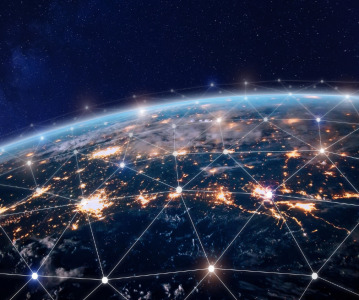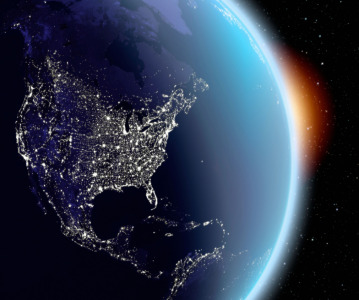How are new PFAS regulations impacting excipient manufacture? – CPHI North America Interview
.png)
In another interview from CPHI North America in Philadelphia in May, Peter Schmitt from Montesino Associates talks about his presentation on 'Navigating the Waters of Change: The Impact of New PFAS Regulations on the Manufacture of Excipients in the Pharmaceutical Industry'.
Please could you introduce yourself and give us an overview of your career?
My name is Peter Schmitt. I'm Co-Founder and Managing Director of Montesino Associates. We are a consulting and advising company that focuses on healthcare, the interface between materials, machinery, customers, and patients. The company has been around for a little over 20 years, and I've been in this business for more than 40 years.
Could you give us a brief overview of your presentation?
I'm going to be talking today about PFAS and excipients. Over the last 6–9 months, there's an emerging and growing concern about PFAS from the regulatory side. In the talk, we'll look at an experience I've had often in the past, where Europe is going in one direction the USA is going in another. The talk will begin by reviewing where things are, both in Europe and in the USA. In Europe, the tendency is to look at regulating or banning a lot of the PFAS materials, whereas in the US right now the trend is to look at figuring out where the materials are used. There's a twist to this. For the second time in my experience, now the US has a further split. The federal government and its agencies are going one way and the states are going in another, which is going to make it exciting for people. Normally, we don't think of PFAS is a major source of ingredients in excipients. There are 10,000 PFASes. I can’t see all of the excipient manufacturers saying we will never use excipients. Regardless, the regulations are going to require that people begin to monitor not only where it's used in the process, but where it's used in their plants. In the USA that can be as extreme as the water used in the process. So we’d need to give people a foundation for how to prepare to deal with this. We call it an emerging series of regulations. It's going to continue to emerge, and that's a long way from being clear.
The concerns around PFAS have been recognised for a long time, but has this increased more recently? And what action has this been invoking?
On the sustainable side, there's much more activity historically on specific materials like PVC, which has been under challenge for a long time. PFAS is in this sense, a little bit new in comparison. The term forever chemicals generated a lot more interest. And most people don't really know what PFAS materials are. One of the things to talk about, which is a challenge right now is the way it's characterised, there are about 10,000 different substances, so how can you define what a PFAS is? You can give the technical composition, but that's not going to help most people. I think the awareness of the amount of PFAS in the air and water supply as people are beginning to measure that is a big driver. There are issues where, not the materials themselves, but the chemicals used to manufacture PFAS are now detected in the water supply. That's generating a lot more interest from the consumer public, which is going to put more pressure on the industry. That could be a big driver of change coming from that that perspective.
Do you think there should be a globally standardised level for what is deemed acceptable?
Personally, I say we need to harmonise. Although in a lot of political places, it's not popular to talk about globalisation, we really need to globalise this because there are boundaries for these materials all over the world, but they’re different. So, I would like to see globalisation, but it’s going to be difficult.
Do individual companies see this introduction of regulation as a priority?
Due to some recent liability issues in the USA, it's a much higher priority than it's ever been before. It's in front of major chemical companies more than it's been in the past. However, the challenge here is because most companies will correctly say, PFAS materials are critical for human health. Not only that, but also for economic health. So there is a need to strike the balance between how do we begin to manage what needs to be done to reduce the use of PFAS materials safely, without simply implementing a ban, which could do more harm than good.
In Europe, it tends to be more government driven. There's more ability to get political movements behind something. Given the polarisation of politics here in the US it's more driven by litigation. Normally things in the USA are achieved through litigation, as opposed to by a normal political process.
In an ideal world, I'd like to think of it as instead of polarizing, rather as threads that need to be woven together. Sometimes threads get tied into knots. Hopefully, we can start to untie the knots, and either weave or knit into fabric. It will be good for the products, which we need, but for the environment as well, we have to figure out how to make that into a new fabric. Again, for the upcoming workforce there's a lot of job security and opportunities coming from this.
Aside from the legislative aspects, what are the main challenges that have been surfacing when trying to reduce the amount of PFAS being used?
The first major challenge is breaking PFAS into pieces that people can handle, because 10,000 is just too much. There is some discussion at the minute around whether fluoropolymers should be given a pass, I think that'll be a challenge. Getting people to talk about the materials is a separate issue from the way that materials are made. Then hopefully, we can begin to focus on where the real problems lie, where are the real risks? Is it from certain materials that are used in the manufacturing process? Can these be reduced and handled in a better way? I certainly think so.
What work is being done into developing alternatives to see if PFASes can be taken out of the manufacturing chain completely?
There's certainly a lot of research being done into PFAS-free alternatives, this is particularly attractive for healthcare companies. However, it is a considerable task to find alternatives that replicate what PFAS materials can do, that’s why they exist, it’s not easy to do what they do with other materials. So the challenge would be in things like remediation, what you do with the process, and taking the time and GMPs to handle it correctly. It is going to be a lot of work.
Do you think that pushing to be a more sustainable industry will help in looking for alternatives?
It is going to be woven into the sustainability issue.
There is a lot of talk these days about simple versus complex, and this is a complex issue. So I'll give a simple example, while on one hand there are going to be a lot of consequences of eliminating the use of PFAS, on the other hand, you can consider some aspects, such as dumping untreated wastewater very simply as a categorically bad thing to do. Which can encourage thinking around when we have chemicals that are tested, they really need to be treated differently before we dispose of them in water, or the air, etc. Now, that's a challenge for politicians, turning these processes into a policy, and determining what is a simple fix, or a complex challenge, and what to focus on.
What resources and actions can companies that are just starting out and trying to look at acting in a more responsible way, do?
The first thing I would encourage people to do is to figure out where PFAS plays into your current plant operations. From there you can determine which aspects can be more easily resolved, whether there are any alternatives available at this point. There might not be much that can be changed, but it’s a start. After this, I would urge asking the more formidable questions. Where does the PFAS that I’m using go? Is there any possibility of that escaping into the environment, the water systems or the air? And how do you manage that versus managing something that, as a product has a very small chance of having an impact? Then going on to develop that into a process that people can depend on. This requires more of an ongoing process rather than an event where you change one aspect and its done forever. It's going to take time and patience and probably an uncomfortable mix of what's simple and what's complex.
What would the costs associated with these process and development changes be?
It's difficult to put a number on that, for example, if pharma people make a change, there are regulatory costs associated, and there are material costs. When you have a material that is in primary contact in either pharma or a medical device, and you're going to make a change here, the bigger cost is in regulatory.
We say, in our world, there are three devils. First, the devil is in the details, then the devil is in the scale, and finally the devil is in the clock. And it's how you weave those three threads together. On cost, the details are going to be difficult. The scale is hugely important, because until you get certain materials to a scale, the cost implications are terrible. Then finally, how you manage the timing is also going to be critical. I wish I had a silver bullet.
Watch the full presentation from CPHI North America here.
Related News
-
News Technology revolutionising drug substance development: CPHI North America Interview
From one of the content tracks at CPHI North America in Philadelphia, USA, in May, a lightning round talk was presented on 'Combining Biology and Chemistry for Smart Manufacturing', from Masha Kononov, Ingenza. In the following interview K... -
News Providing solutions for special populations – CPHI North America Interview
In Philadelphia in May on site at CPHI North America we were able to meet with some of our speakers regarding their presentations. In the following interview Srinivasan Shanmugam, Executive Director, Pharmaceutical Sciences, Business Sup... -
News How tech transfer and process optimisation can help patients – CPHI North America Interview
Following a successful few days in Philadelphia for CPHI North America, I was able to discuss some of the sessions with our expert speakers, gaining a little more insight into the key topics from the event. -
News Angels for Change: Guardians of the pharmaceutical supply chain
Angels for Change is an organisation that aims to build up resilience in the supply chain, by linking real life cases of patients that have been affected by drug shortages, and working to rectify and prevent them. -
News CPHI North America 2024 – From the Floor
Welcome to Philly! CPHI North America once again graces the Philadelphia Convention Center, 7–9 May 2024. -
News On Track at CPHI NA 2024: Supply Chain Economy with US Pharmacopeia
On the 7–9 May 2024 in Philadelphia, CPHI NA will be presenting an unmissable agenda, filled with content across 4 main tracks. In the following interview the Supply Chain Economy Track sponsor, the US Pharmcopeia introduces the track, and w... -
News Women in Pharma: Diversi‘tea’ at CPHI North America
CPHI North America will unite the pharmaceutical supply chain in Philadelphia from May 7–9, 2024 for 3 days of innovation and connections. As part of the content Agenda, our Diversity Track will bring the industry together to discuss the imperati... -
News On Track at CPHI NA 2024: Sustainable Futures with Thermo Fisher Scientific
On the 7-9 May 2024 in Philadelphia, CPHI NA will be presenting an unmissable agenda, filled with content across 4 main tracks. In the following interview the Sustainable Futures Track sponsor, Thermo Fisher Scientific gives an overview of what to expe...
Recently Visited
Position your company at the heart of the global Pharma industry with a CPHI Online membership
-
Your products and solutions visible to thousands of visitors within the largest Pharma marketplace
-
Generate high-quality, engaged leads for your business, all year round
-
Promote your business as the industry’s thought-leader by hosting your reports, brochures and videos within your profile
-
Your company’s profile boosted at all participating CPHI events
-
An easy-to-use platform with a detailed dashboard showing your leads and performance






.png)
